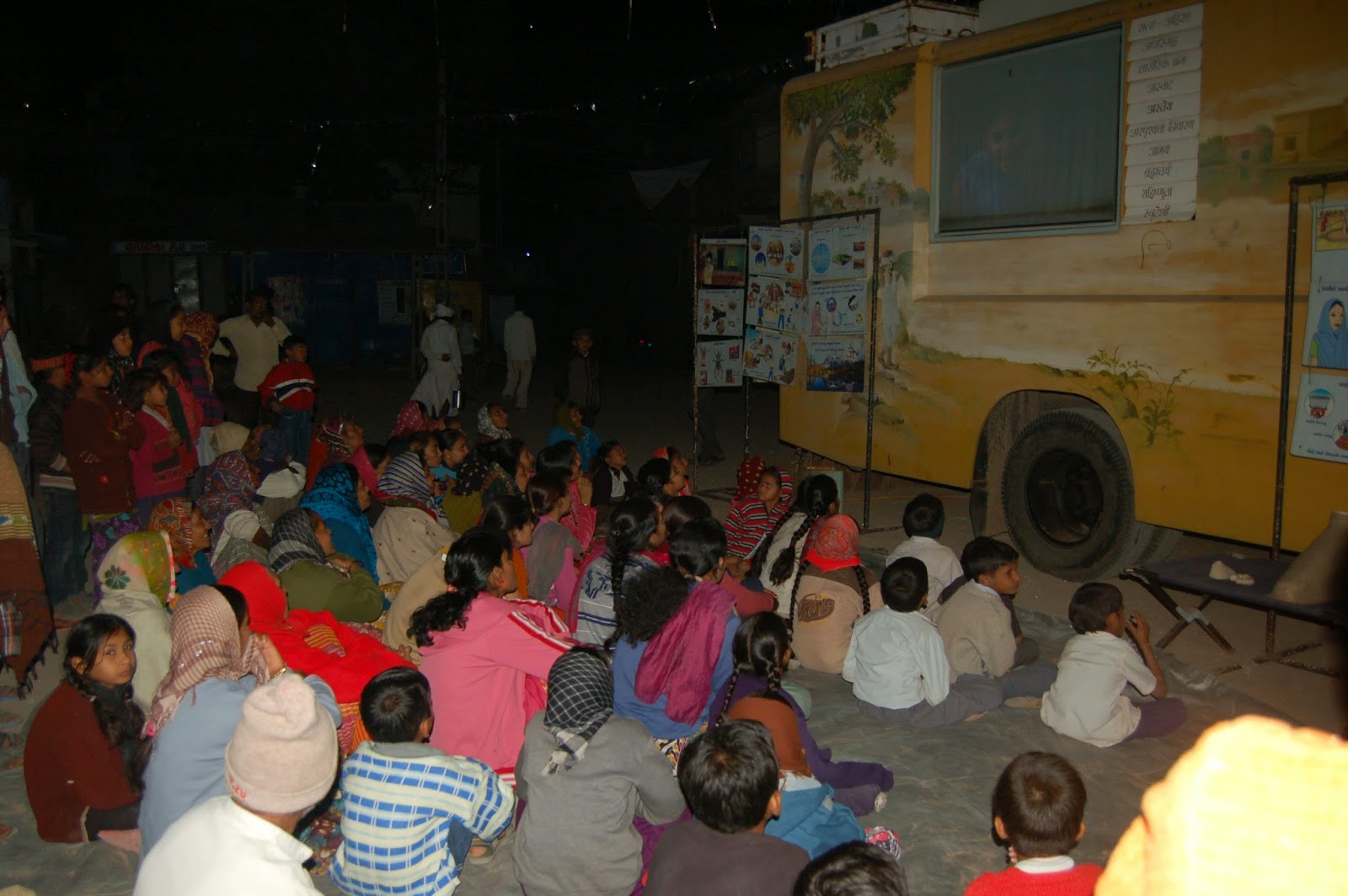Village Awareness Campaign
Santej
Village, Gandhinagar District
From 26
- 27 February, we traveled to Santej Village, Gandhinagar with the Nandini Van
to conduct
new sanitation awareness programs. In addition to the core ESI
staff, we were joined by a number of international volunteers from the United
States, including Dr. Sarik from Stanford University in California who was in
India conducting research based on some of our underlying values and
methodologies and those from our partner organizations.
We
reached Santaj on the morning of the 26th, a Wednesday. After receiving warm
greetings, first step was to meet with the local leaders of the village to
learn about their specific needs and challenges. As is typical in such poor,
rural setups, we heard and saw the sanitation issues in the form of improperly
disposed of solid waste, poor health and hygiene habits, dirty drinking water,
and we also heard about a number of issues with the women, such as the
demoralizing problem of open defecation in the absence of toilets.
After, we shared our sanitation
exhibition outside of the Nandini Van. We displayed a posters demonstrating
good sanitation and hygiene practices, such as use of toilets, regularly
washing hands, cutting finger nails, brushing teeth, and properly disposing of
waste. This attention-grabbing exhibition is one of our ways of gathering the
residents, lovingly
interacting with them, and passing on educational
information. For some who visited with us, it was the 1st exposure to this kind
of information and highly informative. Our impressive Nandini Van, standing
tall and proud, also lets everybody know just how serious we take sanitation.
She gives us credibility, which is important given the low education level in
village setups, as well as
the common lack of interest you find in such
situations when trying to inspire change. We concluded this program by getting
out our jadoos (brooms) and cleaning a portion of the community with the
residents, this practice is also key for building the kind of relationships
that inspire others to make positive changes in their lives and communities.
We then visited a nearby primary
school and had the opportunity to address 500 students in their assembly hall.
Here, as in the village, we shared about the vital importance of developing
proper sanitation and hygiene habits, how this gives yourself dignity, and
prevents disease. With kids, we tend share in the form of playful children’s songs,
comedy skits, and puppet shows to make the experience and material more fun and
age appropriate.
Many
children joined us as we left the school for an inspired rally around the
village. During this time we sang bhajans together and chanted sanitation
slogans such as, “Pivano panni! Gade nahin pio!” Not only is this a lot of fun
that gets everybody involved enthusiastic, but it also builds a motivational
vibration that tends to make people want to adopt better sanitation and hygiene
habits. It really does feel better to be actively involved in the betterment of
your life and community than it does to be a part of the problem. As lovingly
as possible, we try and help people to see this.
After some rest, we went door-to-door
to all the homes spreading the word about our evening
program to try and
encourage people to come. These home visits were not just about giving an
invitation, but more importantly were a precious opportunity to talk with
residents as if they were our next door neighbors. Sometimes we would stop for
tea, share stories, listen to challenges, and pass on our values. This process
also helps relationship building and so sustainability.
A number
of residents did end up joining us for our formal sanitation presentation in
the evening outside of the Nandini Van. We began, as we usually do, with an all
religions prayer to ground our sharing in the right kind of spirit. From there,
we introduced ourselves, introduced the work of ESI and Ishwardada Patel, our
results and way of life. We showed a few short films about sanitation that,
through humor, communicate the kind of values we are trying to pass on. Our
goal during this time was to communicate as much information as we could in the
limited time we had and most importantly,
inspire the residents to be the
change by showing them just how important it is to do such basic things as use
a toilet, wash hands, and dispose of waste.
We began
the morning of Day 2, Thursday, with prahbatt feri, or singing
of bhajans around the village. This creates a spiritual atmosphere in
the community and also shows the residents this side of our work. We are not
just trying to create an outcome of a cleaner society and world, we also feel
as if we are serving God at the same time. This tends to touch people’s hearts
and communicates we are not just trying to do a job, but are on a sacred
mission.
After tea and breakfast and with the
help of our volunteers, we painted inspirational sanitation slogans and images
on some of the walls of the community to serve as a reminder in our absence.
Repeated exposure to positive sayings is known to cause similar behavioral
change and is an effective tactic when trying to uplift a struggling community,
i.e., outer to inner beauty.
We
concluded the 2-day program by sitting with a number of women in the local Anganwdi (pre-school).
In the absence of toilets, women have a particularly difficult time, as they
will forego use until after dark when nobody can see them. This is unsafe and
demoralizing. We wanted to hear from them and give them some reassurance that
we would help in any way we could.























